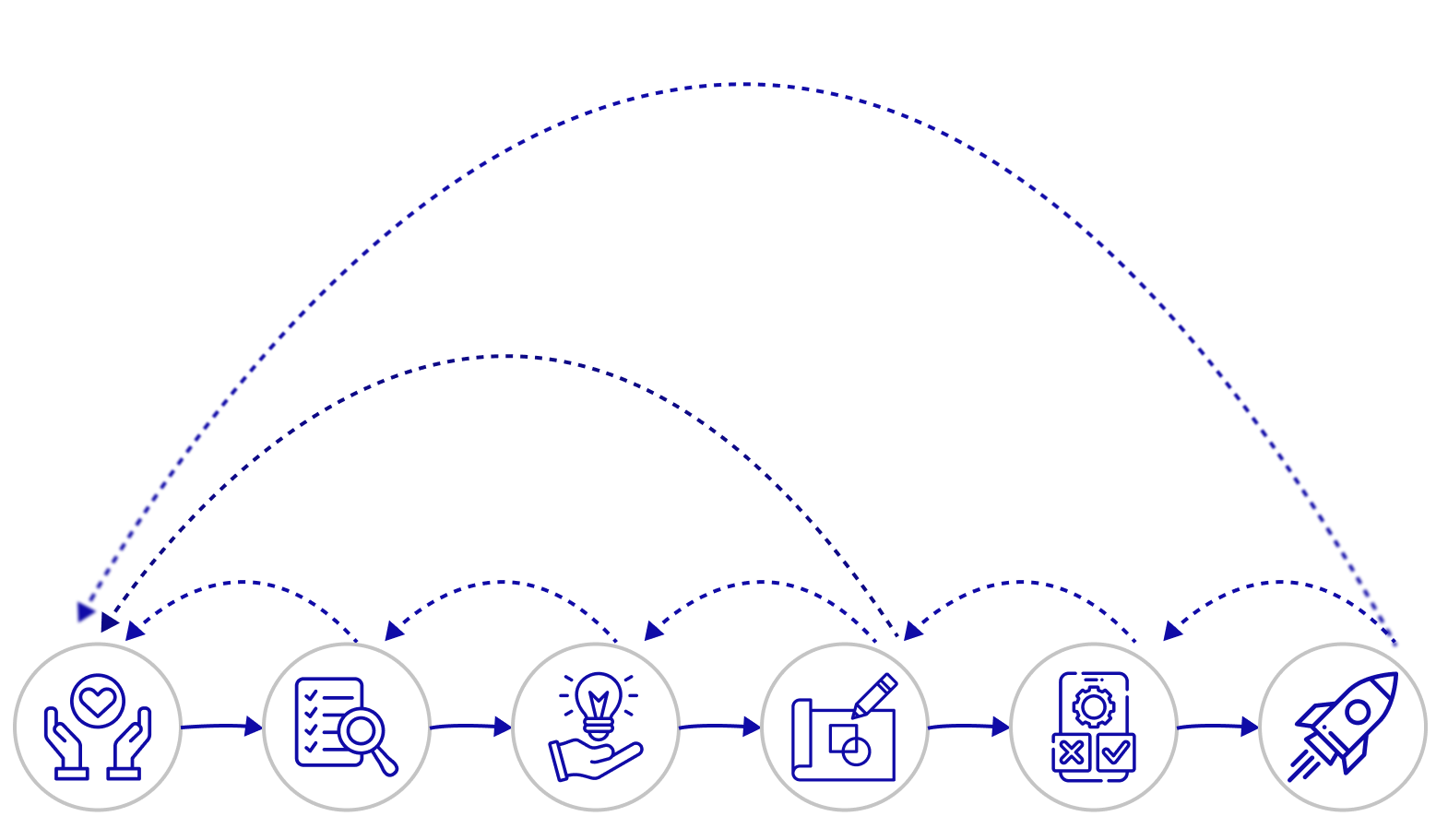Our approach is rooted in the design thinking process, a user-centric methodology for problem-solving that is an iterative and non-linear framework, meaning insights gained at any stage can lead us to previous ones for refinement.
This diagram visually represents the design thinking process, that emphasizes understanding users, challenging assumptions, and redefining problems to identify innovative solutions.

The stages of the design thinking process are as follows:
| Stage | Image | Description |
|---|---|---|
| Empathize | Hands with heart | An initial stage that focuses on deeply understanding the user's needs, experiences, and motivations through direct observation and engagement. |
| Define | Checklist and magnifying glass | After gathering information, this stage involves analyzing insights to clearly define the core problem you need to solve. |
| Ideate | Lightbulb | The brainstorming phase, where you generate a wide range of creative ideas and potential solutions without immediate judgment. |
| Prototype | Blueprint | A stage where you create scaled-down, experimental versions of your product or solution to investigate the ideas generated. |
| Test | Mobile screen with checks | You test these prototypes directly with users to gather feedback and iteratively refine the solution. |
| Launch | Rocket | The implementation and deployment of the refined, user-tested solution. |
The arrows highlight the iterative and non-linear nature of the process. While there's a general forward progression, the looping arrows show that insights gained in later stages often lead teams to revisit earlier ones. For example, testing a prototype might reveal a flaw in the initial problem definition, prompting a return to the Define or even the Empathize stage for deeper understanding before moving forward again.
A solid arrow indicates a linear, sequential progression to the next phase.
A dotted arrow represents a non-linear path, allowing for a return to previous phases for reassessment and iteration.